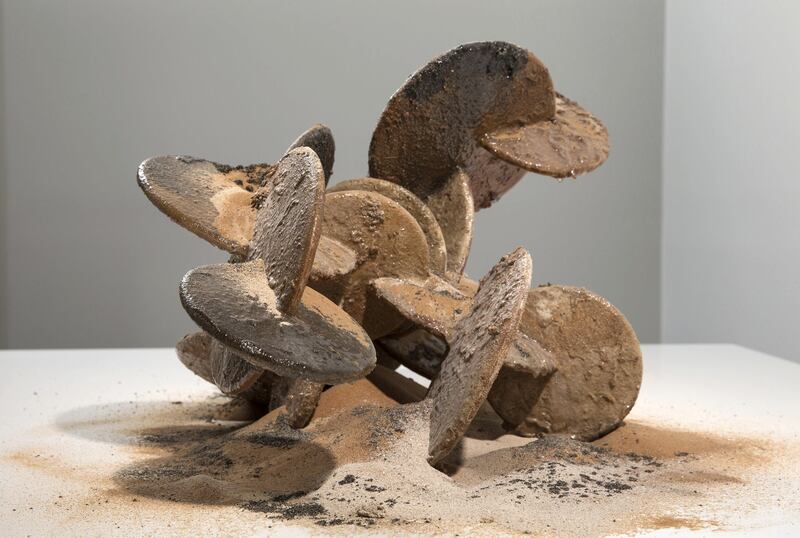"Berlin is filled with underdogs and rebels who are unapologetic about showing their art. This is also an unapologetic show," says Sarah Al Agroobi, whose artwork is appearing in Portrait of a Nation, the exhibition of UAE artists that opens today at the me Collectors Room Berlin. "The idea that the UAE doesn't have a history – it's really turning that on its head."
Portrait of a Nation was organised last year by the Abu Dhabi Music and Arts Foundation (ADMAF) to commemorate its 20th anniversary. Installed at Emirates Palace hotel, it collected together the work of more than 50 UAE artists from different generations and media. Well-established artists such as Mohammed Kazem and Ebtisam Abdulaziz, who exhibited throughout the 1990s in Sharjah and Dubai, showed work alongside the younger artists for whom they helped pave the way.
Now this exhibition has travelled to Berlin, where it is taking part in the turbo-charged Berlin Art Week. For the next four days, the city's galleries and institutions are hosting a series of events to showcase the artists' work. In its sixth year, Berlin Art Week has more than 150 events and last year welcomed 100,000 visitors.
Berlin is the undisputed capital of the European art world, with artists, curators and writers producing and showing work in the former East German city.
A large number of galleries – more than 100 – take part, many with both exhibitions at their gallery sites and at the art fair, art berlin, that also runs during the period.
The city's numerous foundations and museums also use the high-visibility week to launch major exhibitions. This year the Schering Stiftung, for example, hosts an exhibition of the UK/United States filmmaker Daria Martin, whose work draws on dance and Modernism, while the Neuer Berliner Kunstverein will look at the oeuvre of Harun Farocki, the important political essay-filmmaker who died in 2014.
Portrait of a Nation is housed at the me Collectors Room, the exhibition site of the non-profit Olbricht Foundation in Mitte, Berlin's prime gallery district.
Julia Rust, me Collectors Room director, says: "We are so happy to have work from more than 50 artists from the UAE. Having this exhibition as our guest fulfills one of the original ideas of the Olbricht Foundation, along the theme of collecting, which is to make the art of other cultures visible in Berlin."
Rust explains that the collaboration came about on the invitation of ADMAF, who wanted the show to have more international exposure. For Rust, the collaboration between Germany and the UAE shows the potential of "exchange in a globalised world".
For Al Agroobi and other artists who are participating in the exhibition, it is a chance not only to show their work in the vibrant capital of Berlin, but also for Berlin to see the range of work made in the UAE and the richness of its history. "This show challenges so many stereotypes," she says. "It's art about the UAE made by UAE artists themselves."
Inside the exhibition
The big news for the UAE art scene at the moment is naturally the opening of the Louvre Abu Dhabi, in less than two months. But as that flagship project has progressed, behind the scenes, various organisations in the UAE have worked to support the visual arts and design, from ADMAF to the Salama bint Hamdan Al Nahyan Foundation. As the focus of the world turns to the universal museum of Louvre Abu Dhabi, Portrait of a Nation looks at what has been happening within.
What themes emerge? Landscape is a major one. Zeinab Al Hashemi showed a digitally altered aerial map of Abu Dhabi, Coast Collision (2016), in which roads and waterways mirror each other to create a brocaded pattern.
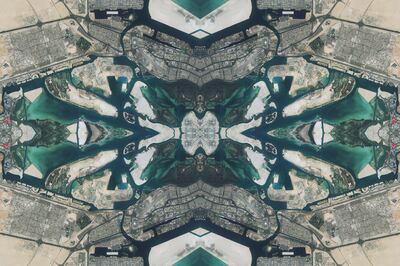
Al Agroobi used the seven different colours of the sand in her work The Desert Rose (2016) to represent the differences among the sands, and ways of life, of the seven Emirates.
It’s not hard to understand why Emirati art should be so interested in landscape: the desert stretches out in undulating sameness and the scale of the human ambition to conquer it has been equally vast, with new villas, hotels and offices continually eking further outwards. Many of the earliest works in what is now considered Emirati contemporary art, made in the 1990s and early 2000s, focused on the subject.
One of the artists active in that generation, Mohammed Ahmed Ibrahim, is represented in “Portrait of a Nation” with a new work, The Qubba Project (2015), in which he created mounds of rocks in his native Khorfakkan; an image of this, with the same title, is on view in the show. It suggests both the forbiddingness of the Western Emirates mountains as well as the pathos of man’s attempts to mimic them.
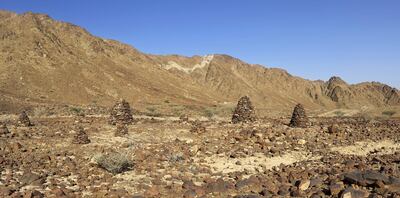
Other artists chose works for the show that had personal references.
Salama Nasib explains that her fabric installation, Her Patterns (2016), “was inspired by my mother’s textiles back in the 1980s and the 90s. While looking at [my mother’s] photo albums I came to realize how much I used to admire her choices of fabrics,” she continues. “I wanted to dedicate this piece to her.” Nasib’s work consists of a four-metre-high laser-cut fabric whose pattern was taken from the old photographs of her mother’s clothes.
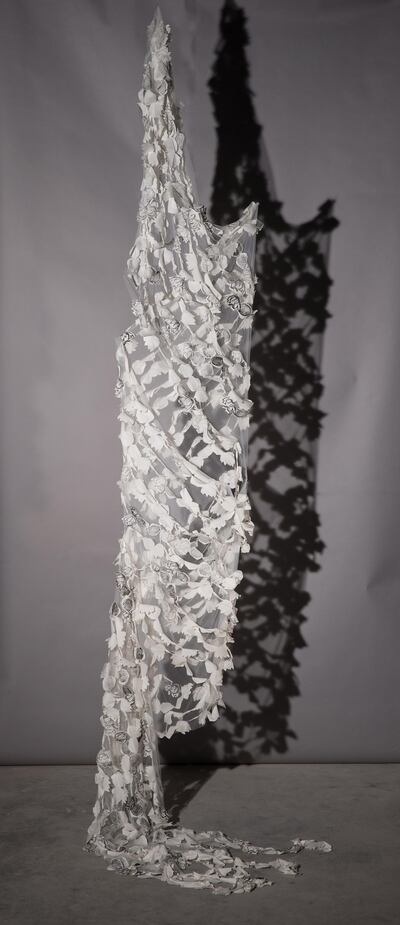
Latifa bint Maktoum contributed the photograph Family (2016), which originally debuted as part of a cycle of visually elaborate self-portraits in which the artist chronicles becoming a wife and mother. Family shows the artist and her husband, both in national dress, as she holds their son and they gaze out onto the landscape of Dubai beyond, with its sand dunes and—of course—numerous cranes.
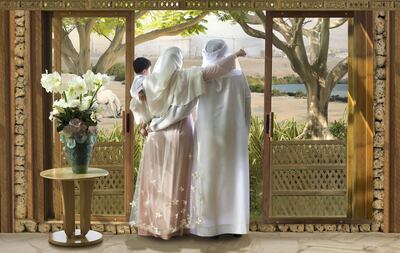
The photographs depict an important chapter in many women’s lives. At the same time – remembering that, for a previous generation of Emirati women, it was frowned upon to be photographed – it also is a quiet move to shift the norms for the representation of women. Bint Maktoum appears in all her photographs, but notably always with her face turned away.
Emirati home life also appears in the wooden seating area, The Nomad (2015), that recalls the Emirati traditional shelters, or arishes, made of palm trees and palm fronds. The Nomad was made by the designer Khalid Shafar and was previously exhibited at Dubai Design District.
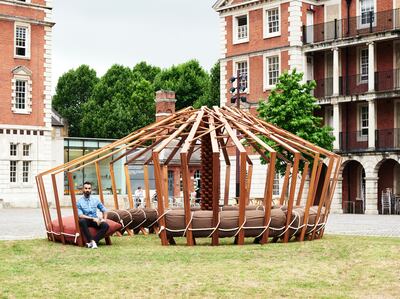
The work is exemplary of another key facet of art in the Emirates: the overlap between visual art and design. Whereas these disciplines are conventionally considered as separate – design work has applied uses, whereas visual art is broadly made for art’s sake – in an Emirati context they freely mix.
Indications such as these might prove the lasting legacy of this travelling show, which reveals how Emirati art is shifting and adapting cross-cultural norms, often in ways that flaunt how art, khaleeji or otherwise, is understood abroad.
______________
Read more:
[ Mario Testino's private collection at auction with Sotheby's ]
[ New public programme deciphers UAE through food, sport and music ]
[ Louvre Abu Dhabi: The museum of then, now and the future ]
______________
